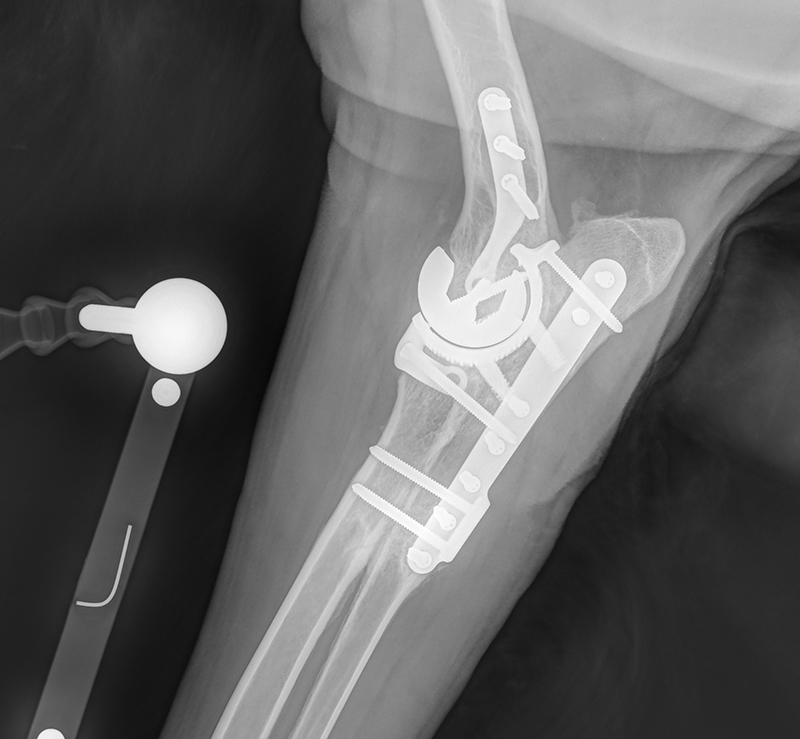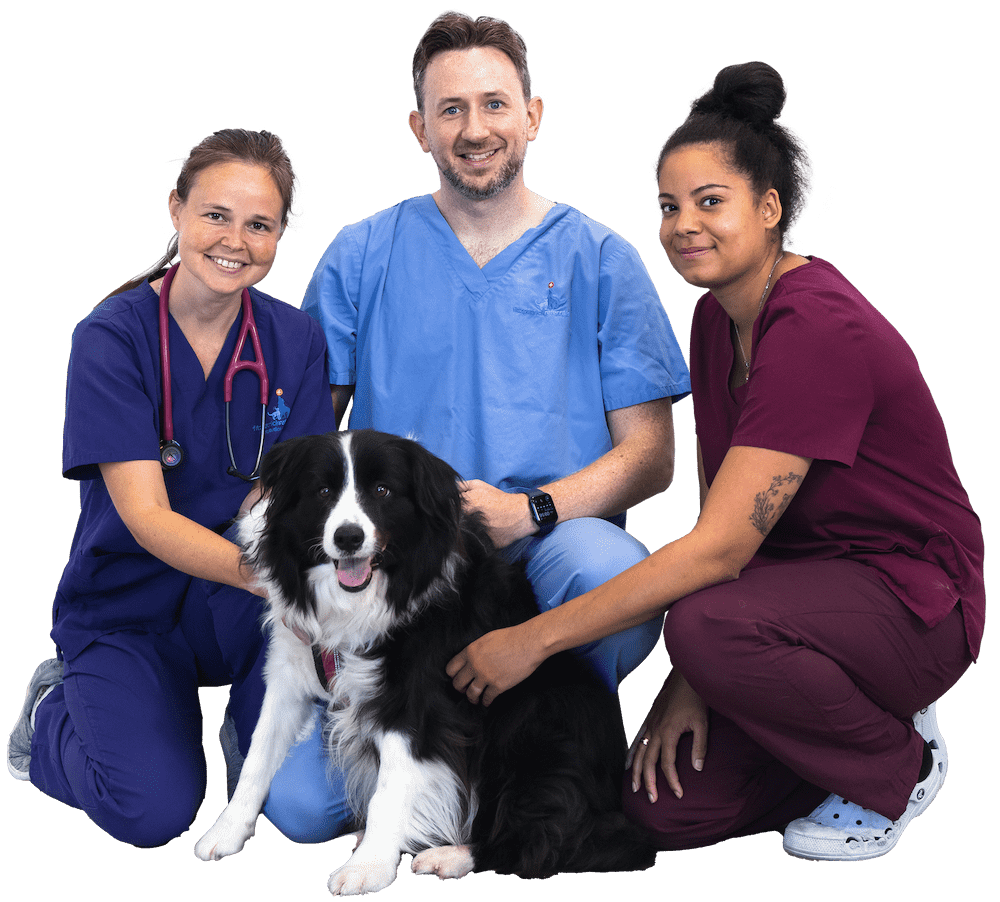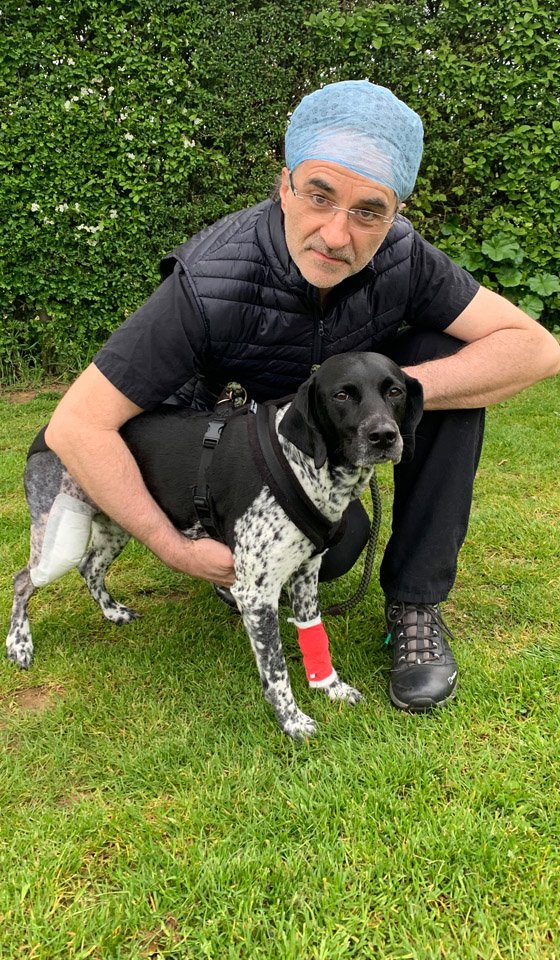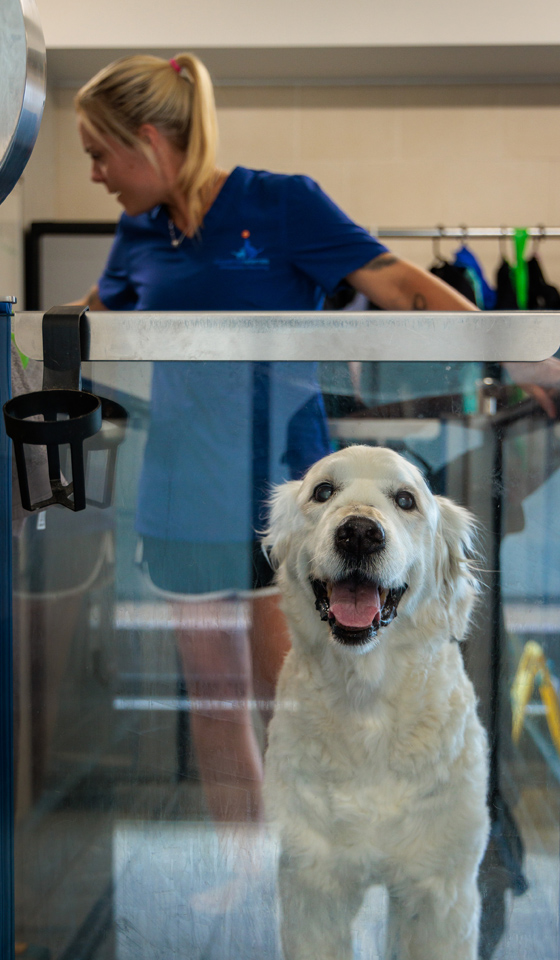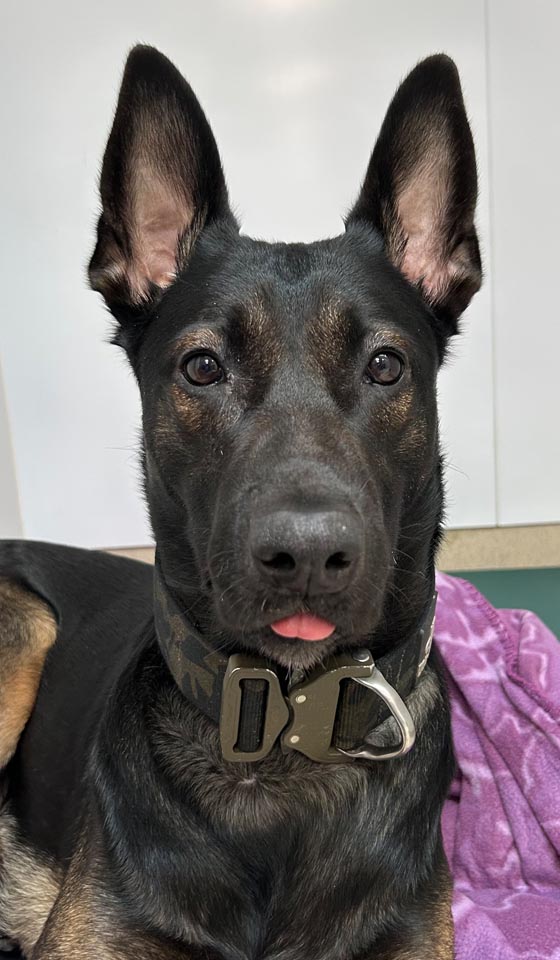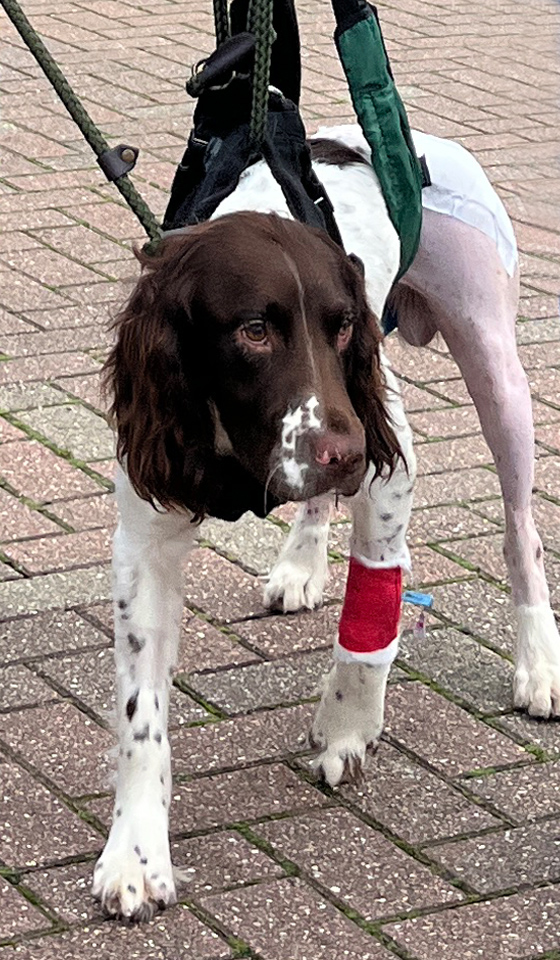What is total elbow replacement?
Total elbow replacement (TER) is reserved for animals that have painful conditions of the elbow joint that have proven unresponsive to conventional surgical techniques or conservative management using pain relief and rehabilitation. Total elbow replacement is used as a salvage procedure i.e. it is performed as a last resort where other treatments have proven to be or will be ineffective.
Dogs with advanced osteoarthritis of the elbow joint may in some cases benefit from replacement of the elbow joint. Total elbow replacement is an advanced surgical procedure and should only be performed by experienced orthopaedic surgeons.
What does total elbow replacement surgery involve?
Currently, we are one of the few practices in the UK able to provide total elbow replacement surgery, whereby the entire elbow joint surface is replaced with a custom elbow prostheses. At Fitzpatrick Referrals, we have pioneered custom-made total elbow implant systems in collaboration with a group of experienced human total elbow surgeons. We are currently the only referral centre in the UK offering custom-made implants for elbow disease in dogs. Each implant prosthesis is made specifically for the patient using information gained from detailed CT images of the patient’s diseased and non-diseased elbow joints.
Professor Noel Fitzpatrick no longer performs any of the commercially available total elbow replacement procedures due to an unacceptably high failure rate in his experience. As such, we offer customised total elbow replacement options, bespoke for each patient, of which the image above is an example (FitzTER).
What are the potential complications with total elbow replacement?
The major complications encountered with total elbow replacement are dislocation of the elbow joint in the postoperative period, implant loosening or infection. Infection is rare but a potentially devastating complication of any surgical procedure and we take every possible precaution to try and prevent the patient developing an infection. The risk of loosening is also rare. Careful post-operative management of the patient helps prevent dislocation of the elbow joint and implant loosening.
What is the typical recovery after total elbow replacement?
Careful rehabilitation after total elbow replacement is the key to success and it is vital that patients who undergo this surgery are managed diligently for the first 5-7 days after surgery to prevent damage to the operated elbow. After the initial 10 days post-op period each elbow replacement patient is placed on a carefully managed physiotherapy and exercise program uniquely designed by our team of chartered physiotherapists. The aim of the rehabilitation is to gradually progress exercise to off-lead exercise by approximately 12 weeks following surgery for most cases.
During your dog’s hospitalisation period, they will be cared for by a dedicated team of ward nurses and patient care auxiliaries who work alongside your dog’s clinician, a team of veterinary surgeons and chartered physiotherapists, ensuring all of your dog’s clinical and emotional needs are met. Due to the prolonged hospitalised period following surgery, the patient care team make sure your dog feels at home and treats them with love and affection, just as if they were their own.
What alternatives to total elbow replacement are available?
Arthrodesis, or fusion of the elbow joint, may be a viable alternative in patients that are not suitable for total elbow replacement.
3 minute read
In this article
